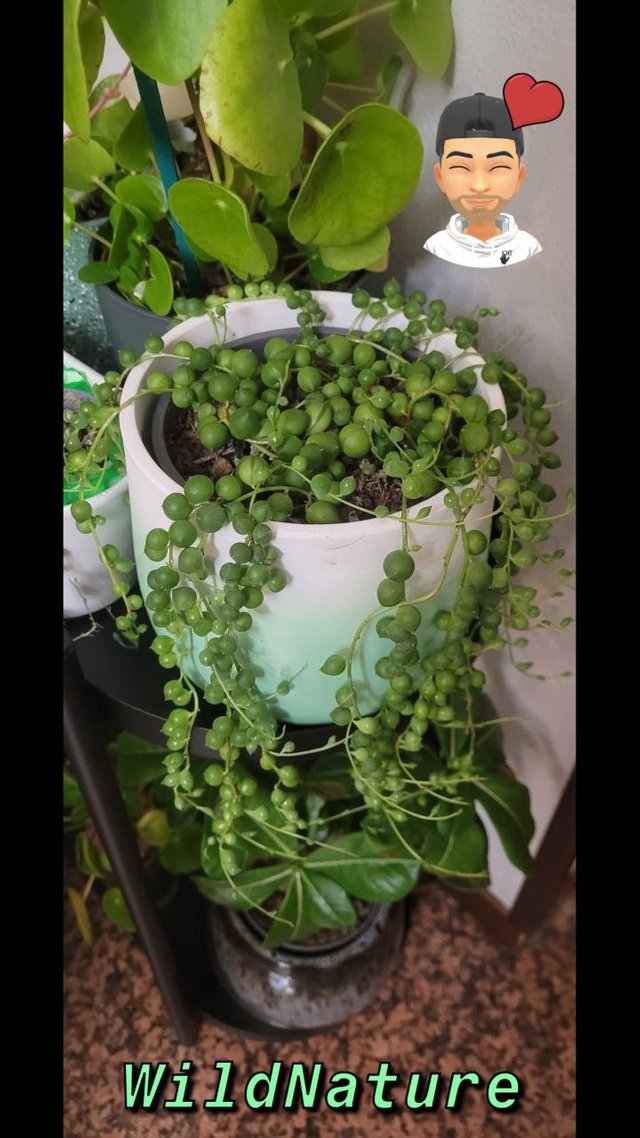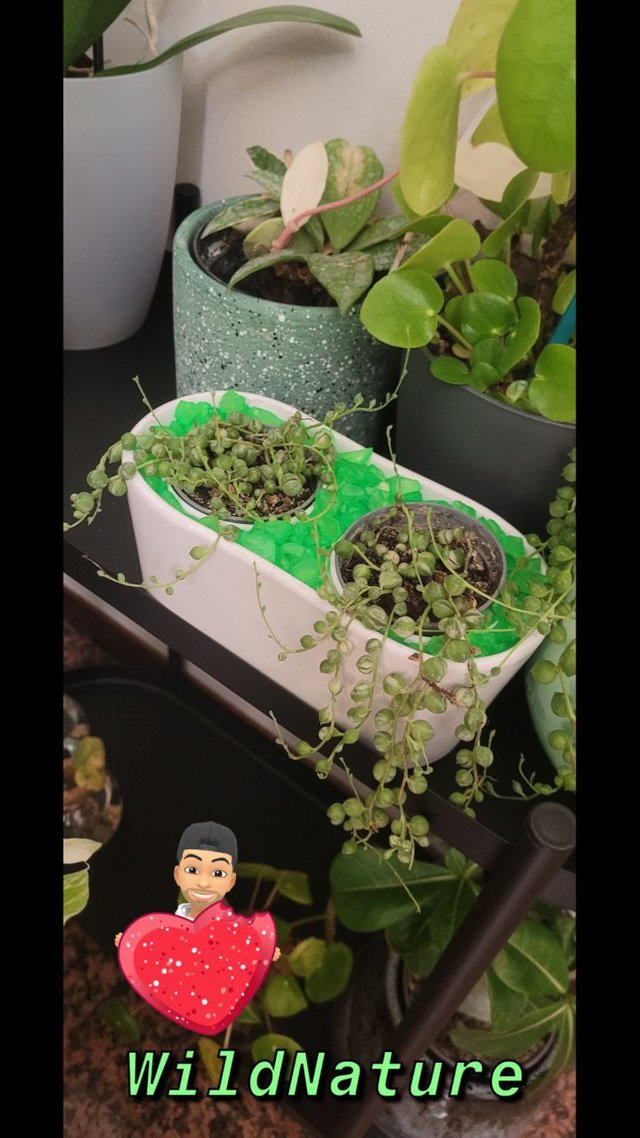Senicio a collana 🌿💚
The English version follows in the end.
Versione Italiana 🇮🇹🇮🇹🇮🇹

Il Senecio rowleyanus, comunemente noto come "senecio a collana", è una pianta grassa appartenente alla famiglia delle Asteraceae, apprezzata per l’aspetto decorativo delle sue foglie sferiche che ricordano una collana di perle. Originario delle regioni desertiche dell’Africa sudoccidentale, il senecio a collana è una pianta ideale per coltivazioni sospese, grazie ai suoi sottili fusti ricadenti.
La pianta è caratterizzata da foglie piccole e tonde che si sviluppano lungo i fusti, aiutando la pianta a trattenere l’umidità e a ridurre l’esposizione al sole, tipico adattamento delle piante grasse ai climi aridi. In estate, il senecio a collana produce piccoli fiori bianchi e profumati che emanano una leggera fragranza di cannella e si sviluppano in piccoli ciuffi alla sommità dei fusti.

Per quanto riguarda la coltivazione, il senecio a collana richiede un ambiente luminoso, preferibilmente con luce indiretta o filtrata, poiché l'esposizione diretta al sole potrebbe danneggiare le foglie delicate. È importante scegliere un substrato ben drenante, specifico per piante grasse, per evitare ristagni d'acqua che potrebbero causare marciumi radicali. Le annaffiature devono essere sporadiche, bagnando il terreno solo quando è completamente asciutto, soprattutto durante la fase di crescita in primavera ed estate, mentre in inverno è sufficiente annaffiare la pianta solo una volta al mese.
La pianta può essere propagata facilmente per talea, staccando alcune sezioni di fusto e lasciandole radicare in un substrato leggermente umido.
E voi, avete mai coltivato il senecio a collana? La terreste come pianta sospesa in casa o preferite altre verietà? Fatemelo sapere nei commenti e lasciate un "like" se apprezzate questa pianta così particolare! 👍🌱🌿💚
(Foto scattate da me) 📸
English version 🇬🇧🇬🇧🇬🇧

Senecio rowleyanus, commonly known as "string of pearls," is a succulent plant belonging to the Asteraceae family, appreciated for its decorative, spherical leaves that resemble a string of pearls. Native to the desert regions of southwestern Africa, this plant is ideal for hanging displays, thanks to its slender, cascading stems.
The plant features small, round leaves that grow along the stems, helping it retain moisture and limit sun exposure—a typical adaptation of succulents to arid climates. In summer, the string of pearls produces small, fragrant white flowers with a hint of cinnamon, which appear in small clusters at the stem tips.

In terms of care, the string of pearls requires a bright environment, preferably with indirect or filtered light, as direct sunlight can damage its delicate leaves. It’s important to select a well-draining, succulent-specific soil mix to prevent waterlogging, which could cause root rot. Watering should be sporadic, soaking the soil only when fully dry, especially during the growing period in spring and summer, while in winter, watering once a month is sufficient.
The plant is easily propagated by cuttings; simply remove a few sections of the stem and allow them to root in slightly moist soil.
Have you ever grown a string of pearls? Would you keep it as a hanging plant indoors or try other varieties? Let me know in the comments, and leave a "like" if you appreciate this unique plant! 👍🌱🌿💚
(Photos taken by me) 📸
